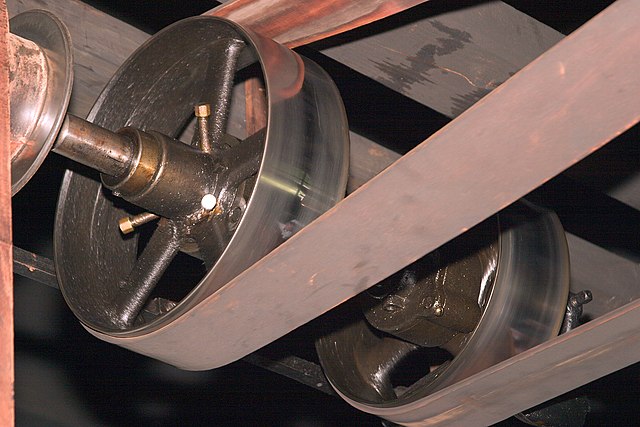A pulley is a wheel on an axle or shaft enabling a taut cable or belt passing over the wheel to move and change direction, or transfer power between itself and a shaft. A sheave or pulley wheel is a pulley using an axle supported by a frame or shell (block) to guide a cable or exert force.
Pulleys on a ship. In this context, pulleys are normally known as blocks.
Pulley in oil derrick
A hoist using the compound pulley system yielding an advantage of 4. The single fixed pulley is installed on the hoist. The two movable pulleys (joined) are attached to the hook. One end of the rope is attached to the crane frame, another to the winch.
A double tackle has two pulleys in both the fixed and moving blocks with four rope parts supporting the load W.
A belt is a loop of flexible material used to link two or more rotating shafts mechanically, most often parallel. Belts may be used as a source of motion, to transmit power efficiently or to track relative movement. Belts are looped over pulleys and may have a twist between the pulleys, and the shafts need not be parallel.
Flat belt drive in the machine shop at the Hagley Museum
The drive belt: used to transfer power from the engine's flywheel. Here shown driving a threshing machine.
A small section of a wide flat belt made of layers of leather with the fastener on one end, shown in an exhibit at the Suffolk Mills in Lowell, Massachusetts
A two-stage transmission using spring belts on a toy vehicle








